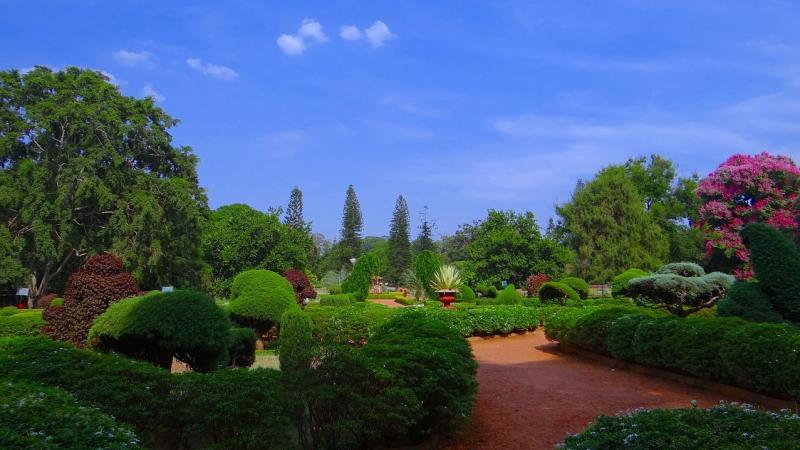
Bengaluru’s decreasing tree cover and expanding concrete jungle in recent decades paints a grim picture of the city’s biodiversity. The tales of sparrows nesting on the roofs, parakeets pecking on the juiciest fruit in the backyard tree or the myriad coloured butterflies dancing in the garden are now fragments of imagination! So where have all the birds, animals and insects gone? It turns out, parks in our neighbourhoods are acting as their safe refuges, according to a new study by researchers at the Ashoka Trust for Research in Ecology and Environment, Bengaluru.
The study, published in the journal PLOS One, looked for plant and animal biodiversity in 37 green spaces spread across the city consisting of birds, butterflies and insects. These included small neighbourhood parks in commercial and residential areas. The study revealed a total of 55 species of trees, 45 species of birds, 41 species of butterflies and 68 species of insects lurking in these green spaces.
“Our research aimed to highlight the importance of small green spaces and the biodiversity they support, which is often undervalued and goes unnoticed within a growing city", shares Dr Savitha Swamy, an author of the study. She also emphasises the need to understand the current state of the city's green spaces and biodiversity before developing any management plan.
The researchers conducted a ‘biodiversity fondness survey’ to understand how tolerant people were towards commonly-encountered groups of animals in the city that included birds, butterflies and insects. They also surveyed biodiversity and vegetation in the city to estimate the abundance and richness of the different species of birds, butterflies, insects and vegetation. Besides this, landscape features such as canopy cover, shrub percentage cover and many other habitats characteristics were identified to understand the preference of habitat type across each taxon.
The study found that large parks, with an area greater than 5000 sq. m had a higher number of birds, butterflies and other insects than medium (1000-5000 sq m) and small (300-1000 sq m) parks. Trees like the silk oak (Grevillea robusta), false Ashoka tree (Polyalthia longifolia), and bauhinias, and shrubs like the golden dewdrop (Durantha), crotons and firebush (Hamelia patens) were commonly found in the parks of the city. They also recorded Blyth’s Reed Warbler and Greenish Leaf Warbler—the two birds that migrate to Bengaluru—within neighbourhood parks.
The fondness survey revealed that people were most fond of birds and butterflies and termed others as “creepy crawlies”, indicating that insects other than butterflies are small, scary and not pleasing. This also reveals that as home gardening practices within the city is reducing their interaction, and the connection with biodiversity within people's backyard is being lost. This fact explains the fondness only towards a few groups of animals.
The study also indicated that the features of the habitat influence the presence of birds, butterflies and insects. Denser green spaces in the neighbourhood were conducive to many diverse butterflies and birds. High canopy cover and tree density supported more species of birds, and shrubs and herbs in the neighbourhood parks were crucial for butterflies and insects. On the other hand, the presence of grass in parks influenced the density of insects.
Interestingly, the number of native and exotic tree species within the parks were similar. Often, non-native species are perceived as a threat to native vegetation and biodiversity. However, in Bengaluru’s urban landscape, this mix was found to support biodiversity rather than mar it—a fact backed by studies that have found exotic species compensating for the absence of native species to promote biodiversity in urban areas.
However, a park can mean many things to different people in the society. "Citizens seem to miss seeing the biodiversity that they encountered a few years back, and prefer to have the parks redesigned which not only incorporates space to carry out their physical activities but also add plenty of trees and shrubs that support biodiversity. Conservation biologists, on the other hand, would look at them as spaces with dense tree areas, with minimal open space ", remarks Dr Swamy. The authorities responsible for building these parks, she says "are taking efforts in retaining the ‘garden city’ image but are largely aesthetic in their approach. They also need to include more habitat characteristics which would help support biodiversity".
The study calls for a greater need to have management strategies in place that involve collaborative management of neighbourhoods to cater to the needs of both citizens and biodiversity. "By redesigning parks, the municipality can help conserve the biodiversity within the city as well as improve the services the park offers to the community living around it”, explains Dr Swamy.
The findings of the study show that although limited by their size, parks in our neighbourhood contribute to the biodiversity of Bengaluru. "We highlight the need to incorporate many more green spaces in the planning stages of newer residential areas and identify ways to connect existing green spaces within older areas in the city through the corridor concept,'' signs off Dr Swamy.
Editor's Note: This article was edited to correct an error. The error is regretted.
This article has been run past the researchers, whose work is covered, to ensure accuracy.





